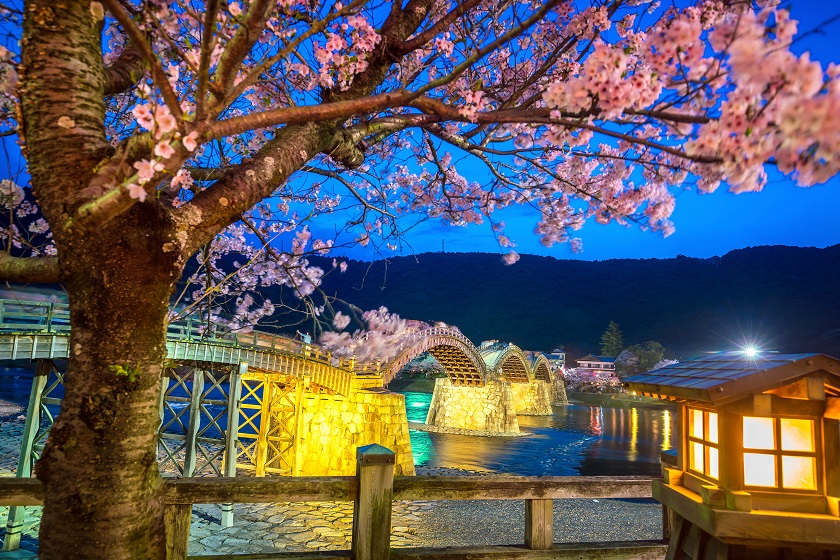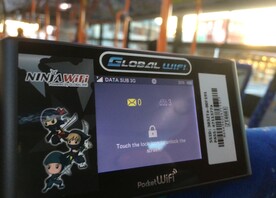Iwakuni (岩国) is a small historic town based around the lower Yamaguchi mountains, and is an easy day trip to make from Hiroshima. Its most beautiful feature is the golden bridge named Kintai-kyo.
Table of contents:
Intro
What to do in Iwakuni
How to access Iwakuni
Tips for visiting Iwakuni
Intro
The domain of Iwakuni was formally a castle town during the Edo period (1603 to 1868), during this time the area prospered being on the Sanyo trade route. Resulting in the building of an impressive mountain castle, you will find the golden bridge of Kintai-kyo and other highlights of cultural importance.
What to do in Iwakuni
Visit the Kintai-kyo golden bridge
The bridge was built in 1673 over the Nishiki river by the local ruler named Kikkawa Hiroyoshi. After a series of previous built bridges had been washed away by floods. It’s constructed in a series of five wooden arches, spanning a total length of total length of about 175 meters. Its name comes from the Japanese word Kintai, meaning gold brocade sash, and was named for this as the structure resembles a traditional Nishiki Obi (sash to wrap a Kimono). The word kyo means bridge.

Kintai-kyo can be visited year round and is especially beautiful during the Sakura season, when the cherry trees along the river all turn pink. Locals and visitors from afar come to view the beautiful sight and picnic under the cherry blossom. After dark the bridge and blossom are lit-up, creating a beautiful display.
Kikko Park
Just after crossing Kintai-kyo, visitors walk into Kikko park and are directly greeted by the statue of Kikkawa Hiroyoshi, who welcomes them in. There are several walking paths along the park, each with their own points of historical interest or fountains to view. In the back of the park is a small museum called the Iwakuni Art Museum and ropeway to Iwakuni castle.
Iwakuni Art museum
Inside the museum is a small but interesting collection, that tells the story of the local Samurai, called Bushido: the way of life and death and local history in general. The collection includes a full set armour, katana’s, pottery, a variety of household items and scrolls depicting life in the Edo period.
Iwakuni castle
The castle was build in 1608, shortly after the founding of the Iwakuni domain and overlooks the surrounding area from mount Shiroyama. While the original castle was destroyed by the Shogun, a full reconstruction was done in 1962. The castle provides a panoramic view over Iwakuni and has its own collection of armour, swords and relics from the Edo period.

Visitors can take the ropeway up to Iwakuni castle, or hike the paths up Mt. Shiroyama.
Samurai houses
Around Iwakuni and especially Kikko park is a variety of Samurai houses. Most are still occupied by residents, while others are open to the public. It’s a good chance to get a glimpse of the Samurai life.
How to access Iwakuni
Iwakuni both has a local JR station, called Iwakuni station and a Shinkansen station called Shin-Iwakuni on the JR Sanyo Shinkansen line.
Buses and taxi’s to the Kintai-yo area run from either station, from where exploring can easily be done on foot.
Tips for visiting Iwakuni
- Iwakuni is easily reached from Hiroshima, and makes for a good day trip.
- Alternatively, it can be combined with a visit to Miyajima, as they are both on the same train line and not that far apart.
- For famous local food try Iwakuni Sushi, consisting of pressed sushi with lotus root and flaked fish.

.png)



